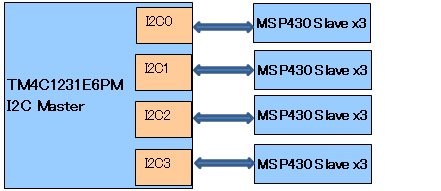Hi,
In our customer's application,
TM4C1231(Master) is connected to 12C MSP430(Slave) devices.
Each I2C module(I2C0,I2C1,I2C2,I2C3) will be connected to 3
slaves as shown below.
The issue is to communicate with all the I2C modules simultaneously.
Currently we are using the TI's sample code which works as
I2C0 Start Comm -> Complete Comm -> I2C1 Start Comm -> Complete Comm -> I2C2.....
but if possible we need to use all the four I2C channels simultaneously.
Please let me know if the simultaneous communication between I2C channels are
possible with TIVA MCU or if there is any way to reduce the delay between the channels.
Best Regards.
Prad


